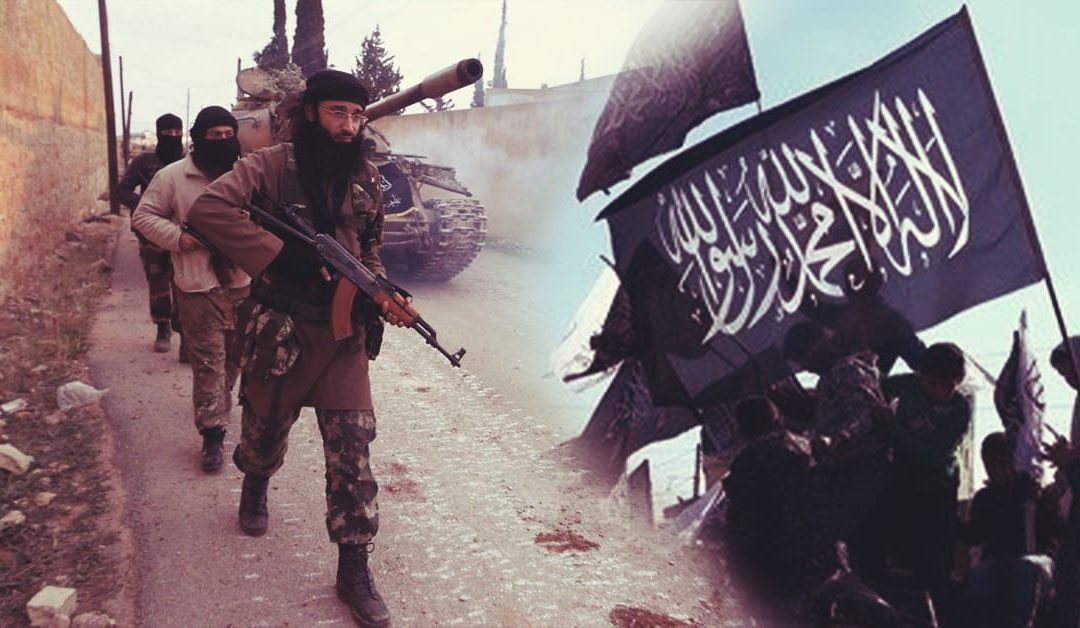Summary of the article
This article addresses the impact of extremist religious discourse in inciting hatred against religious minorities, such as Alawites and Christians, through literal interpretations of religious ideology. It reviews the role of religious media in spreading this discourse and inciting violence, alongside the political dimension that makes targeting minorities a tool for domination and the dismantling of communities. It also discusses the humanitarian and social effects of these policies on the targeted societies and concludes with recommendations to confront this threat by activating moderate religious dialogue and developing media and educational oversight mechanisms.
This article addresses the impact of extremist religious discourse in inciting hatred against religious minorities, such as Alawites and Christians, through literal interpretations of religious ideology. It reviews the role of religious media in spreading this discourse and inciting violence, alongside the political dimension that makes targeting minorities a tool for domination and the dismantling of communities. It also discusses the humanitarian and social effects of these policies on the targeted societies and concludes with recommendations to confront this threat by activating moderate religious dialogue and developing media and educational oversight mechanisms.
When Doctrine Becomes a Weapon: How Religious Discourse Is Used to Justify Violence Against Minorities
Amid the chaos caused by armed conflicts in the Middle East, religious discourse has emerged as a central tool in fueling hatred and attracting followers toward violence, especially against religious minorities. In countries like Syria and Iraq, the confrontations were not merely struggles for power or land but turned into deeply sectarian wars led by jihadist groups adopting extremist ideologies that consider anyone who disagrees with their creed as an “enemy of God” deserving of killing or displacement.
But why do these groups specifically target minorities? What makes Alawites, Christians, Druze, and Yazidis preferred targets for campaigns of ideological cleansing? And is this violence rooted in political conflicts, or does it stem from deep-seated religious ideological currents within the thinking of these organizations?
In this article, we will attempt to deconstruct the religious discourse relied upon by extremist groups to justify their crimes, and analyze the psychological and doctrinal reasons that make targeting minorities a fundamental part of their strategy, while highlighting prominent examples from Syria and Iraq, where these minorities have paid heavy prices as a result of this ongoing incitement.

A gunman carrying a machine gun, with other gunmen in the background.
First: The doctrinal roots of hatred in jihadist discourse
Extremist jihadist groups derive most of their incendiary rhetoric against minorities from narrow and literal interpretations of religious texts, selecting and interpreting them to serve their violent agenda. These interpretations are presented within a religious narrative based on the binary of “truth and falsehood,” and “faith and disbelief,” which places anyone who does not share their vision of Islamic doctrine in the category of “apostates,” “polytheists,” or “enemies of God,” classifications that justify bloodshed and confiscation of property.
In this context, Alawites, Christians, and Druze sects are specifically targeted as they represent a model of “doctrinal deviation” that must be eradicated. In the literature of the Islamic State (ISIS), for example, Alawites are portrayed as a “heretical and infidel Nusayri sect” that must be cleansed from the land. Christians are either forced to pay the jizya tax and live as protected dhimmis under extremist rule, or are given the choice between Islam or death.
It is noted that this rhetoric does not arise in a vacuum but feeds on flawed jurisprudential systems inherited over centuries without critical review. Extremists use texts from traditional jurisprudence in complex contemporary contexts without considering the differences in times or changing circumstances, which turns religion into a tool for killing and exclusion rather than a source of mercy and justice.
Second: Targeting Minorities as a Strategic Tool for Domination and Control
Targeting minorities in jihadist discourse and practice was not merely the result of an extremist religious doctrine, but also an effective political tool used by armed groups to strengthen their power, expand their influence, and dismantle the social structures of the states where they operate.
In conflict areas such as Syria and Iraq, religious and sectarian minorities represent an important element of the national state fabric, often linked to key civil, military, and economic institutions. Therefore, attacking these minorities aims not only at their religious elimination but also at destabilizing communities and reshaping them in line with the extremist groups’ ambitions to build a “purely doctrinal state.”
Targeting minorities is also used as a means to fuel sectarian conflict, allowing jihadist groups to present themselves as protectors of Sunni Muslims against “infidel regimes” or “sectarian militias,” as they describe them. This is what we witnessed in areas such as Mosul and Sinjar, where ISIS committed horrific massacres against Yazidis, Christians, and Shiites — aiming, on one hand, to display power, and on the other, to impose religious dominance.
Thus, sectarian violence becomes a deliberate strategy, not just a byproduct of war. It is a central tactic to extend influence, tear apart the social fabric, and reproduce conflict in ways that serve the interests of armed groups, even if it leads to genocide or long-term forced displacement.
Third: Religious Media as a Platform for Widespread and Systematic Incitement
Extremist media and religious platforms play a pivotal role in promoting hatred against minorities and justifying violence against them. Through recorded sermons, widely shared clips on social media, and ideological bulletins, a discourse is pumped that portrays minorities as “internal enemies” conspiring against Islam and Muslims from within society.
These materials rely on language heavily charged with religious emotion and draw upon historical narratives full of sectarian conflict — portraying, for instance, the Alawites as “traitors” or “agents of the West,” or presenting Christians as symbols of “modern Crusader colonialism.” This is carried out through shrewd propaganda tools that depict these groups as victims of a grand conspiracy, pushing the listener or viewer to feel a “jihadist duty” toward those identified as ideological opponents.
What’s striking is that these messages are not confined to platforms affiliated with jihadist groups alone. They also infiltrate some unofficial mosques or satellite channels broadcasting from outside stable countries, which allows them to reach a wide audience of young people susceptible to narratives of false victimhood and imagined heroism.
The true danger of this media lies in its ability to normalize feelings of hatred and hostility, presenting them in a religiously justified framework. This becomes a psychological and behavioral preparation for committing or supporting acts of violence — even by those who do not bear arms themselves.

A group of masked armed terrorists.
Fourth: The human and social impacts of targeting minorities
The targeting of minorities by jihadist groups is not limited to rhetoric or symbolic gestures; rather, it translates into profound and widespread human tragedies. Mass killings, forced displacement, abductions, sexual violence, and the destruction of sacred sites are all tools used to terrorize these communities.
In Syria, for example, Alawite villages were subjected to organized attacks by extremist factions in several areas, during which massacres were committed against civilians solely because they belonged to a different sect. In Iraq, the atrocities committed against Christians and Yazidis by ISIS were a clear indication of a systematic policy of ethnic cleansing aimed at erasing these communities from the demographic map.
These crimes lead to the disintegration of the social fabric, where survivors live in a constant state of fear and distrust, even after armed groups are militarily defeated. Local communities lose their balance and fall into cycles of psychological and economic trauma that can last for decades.
Such practices also leave deep scars on the collective identity of minority groups, pushing many toward forced migration or social withdrawal. This threatens the region’s cultural and religious diversity and fuels a counter-discourse of hatred and revenge, potentially giving rise to new generations of opposing extremism.
Fifth: Approaches to confrontation and practical recommendations
Confronting religious hate speech cannot rely on security solutions alone. A comprehensive approach is required—one that includes intellectual, cultural, social, and media dimensions—to address the root causes of the problem instead of merely treating its symptoms.
First, extremist religious discourse must be dismantled by supporting moderate religious voices that have credibility and influence within their communities. These voices are capable of reinterpreting the texts used by extremists and exposing how they are manipulated to incite violence, promote takfir, or justify hate.
Second, it is important to monitor media and religious platforms that spread incitement, especially those that operate across borders and broadcast beyond the reach of local oversight. Such monitoring must be legal and precise, avoiding the suppression of free speech and focusing specifically on violent and inflammatory content.
Third, educational institutions, media outlets, and civil society organizations must be engaged in crafting an alternative narrative that promotes pluralism and coexistence. They should demonstrate with evidence how hate leads to disaster—not just for minorities, but for society as a whole.
Finally, it must be acknowledged that hate speech poses a direct threat to human and social stability, no less dangerous than conventional weapons. Confronting it should therefore be a strategic priority for any state or society that aspires to peace, justice, and diversity.
Sources:
- Bergen, P. (2016). United States of Jihad: The Rise of America’s Homegrown Terrorists. Crown Publishing Group.
- يناقش هذا الكتاب كيفية نشوء التطرف في المجتمع الأمريكي، وتأثير الأيديولوجيا الجهادية على الأقليات والمجتمعات المختلفة.
- Liu, S. (2018). Islamic State and the Threat of Global Jihadism. Routledge.
- دراسة حول كيفية استخدام الجماعات المتطرفة الخطاب الديني لتحقيق أهداف سياسية، بما في ذلك استهداف الأقليات في مناطق النزاع.
- Bunt, G. R. (2016). The Extremist in the Age of the Internet: Radical Islam, Jihadism, and the Politics of Cyberterrorism. MIT Press.
- يناقش الكتاب كيف يستخدم المتطرفون وسائل الإعلام الحديثة لنشر خطابهم المتطرف، بما في ذلك استهداف الأقليات.
- Gerges, F. A. (2016). ISIS: A History. Princeton University Press.
- يحلل تاريخ تنظيم داعش وكيفية استهدافه للأقليات الدينية والطائفية، بالإضافة إلى استخدامه للخطاب الديني في نشر الكراهية.
- Amnesty International (2015). The Forgotten Victims: Attacks on Religious Minorities in the Middle East.
- تقرير من منظمة العفو الدولية يستعرض الهجمات الوحشية التي تعرضت لها الأقليات الدينية في منطقة الشرق الأوسط على يد الجماعات المتطرفة مثل داعش.
- Sunnat, T. (2019). Radicalization and Religious Extremism: The Impact on Society and Minority Groups. Journal of Extremist Studies, 12(2), 45-68.
- دراسة أكاديمية تركز على تأثير التطرف الديني على المجتمعات والأقليات الدينية، ودور الخطاب الديني في هذا التحريض.
- European Union Agency for Fundamental Rights (2018). Hate Crime in the EU: A Threat to Religious Minorities.
- تقرير من الاتحاد الأوروبي يتناول التهديدات التي يواجهها الأقليات الدينية في أوروبا بسبب الخطاب الديني المتطرف، ويستعرض الوقائع والإحصائيات.
- Pew Research Center (2017). The Future of World Religions: Population Growth Projections, 2010-2050.
- دراسة تحليلية تسلط الضوء على التغيرات السكانية للأديان في العالم وتأثير ذلك على الأقليات الدينية في الدول الغربية.

